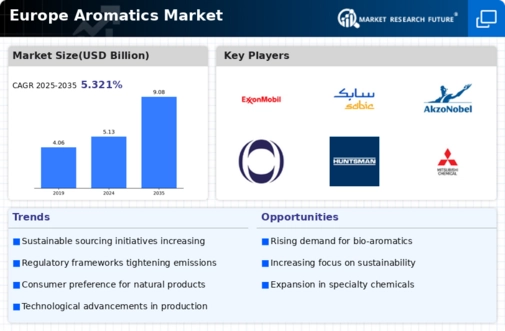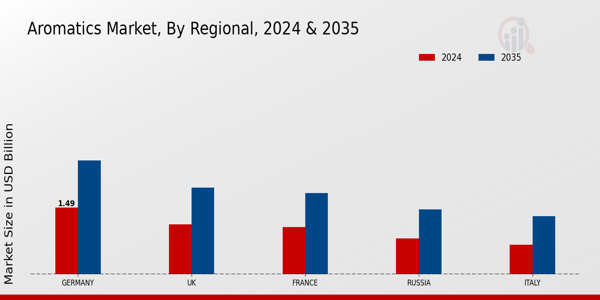Europe Aromatics Market Summary
The Europe Aromatics market is projected to grow from 5.13 USD Billion in 2024 to 9.08 USD Billion by 2035, reflecting a robust growth trajectory.
Key Market Trends & Highlights
Europe Aromatics Key Trends and Highlights
- The market valuation is expected to reach 9.08 USD Billion by 2035, indicating a substantial increase from 5.13 USD Billion in 2024.
- The compound annual growth rate (CAGR) for the Europe Aromatics market is projected at 5.33% from 2025 to 2035.
- This growth is likely driven by increasing demand for aromatic compounds in various industries, including automotive and consumer goods.
- Growing adoption of sustainable practices due to environmental regulations is a major market driver for the Europe Aromatics sector.
Market Size & Forecast
| 2024 Market Size | 5.13 (USD Billion) |
| 2035 Market Size | 9.08 (USD Billion) |
| CAGR (2025-2035) | 5.33% |
Major Players
ExxonMobil, SABIC, AkzoNobel, Ineos, Royal Dutch Shell, Huntsman, Mitsubishi Chemical, BASF, Covestro, Repsol, Dow, LyondellBasell, TotalEnergies, Clariant, Eastman Chemical
























